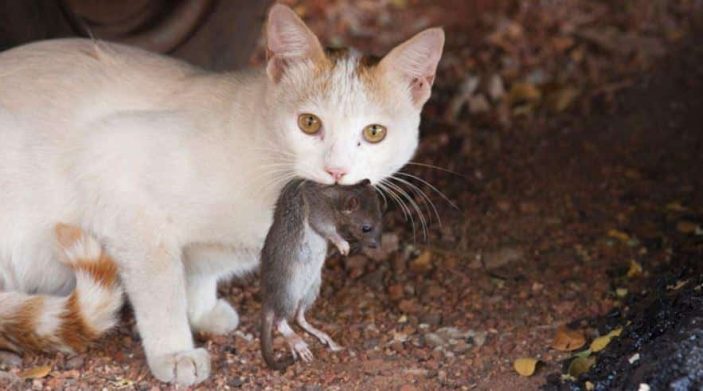Cats and dogs need calcium and phosphorous. Also, these two very essential minerals must be provided in their required amounts and correct ratios.
This discussion will focus on calcium where we will look at is functions, sources, deficiency symptoms and much more.
Sources of calcium for cats
Calcium is naturally available in some foods such as cheese, milk and other dairy products, tofu, soya beans, green leafy vegetables, nuts, fish (especially when eaten with bones), and so on.
Remember that your feline friend is an obligate carnivore. Therefore, his or her ideal natural sources of calcium should mainly be animals sources such as bones, meat, fish, organ tissues, milk, and dairy products. Additionally, small amounts of legumes and leafy green vegetables will be an extra source.

Secondly, this mineral can also be added to some commercial cat foods or given as dietary supplements.
Finally, for absorption and proper metabolism to occur, magnesium is necessary as it activates vitamin D that is vital in the absorption of calcium. Also, magnesium is required by calcitonin hormone which helps draw calcium from soft tissues and blood to bones, hence avoiding calcification of soft tissues.
Functions
Calcium is found both in an ionized form (iCa) that is biologically active or bound to phosphates and proteins. Some of the vital roles it plays include the following:
- It forms part of bones and teeth structure, and it works with boron, vitamin D and phosphorous in so doing.
- In its ionized form (as an electrolyte) it helps in regulating cell fluid concentration, aiding in membrane permeability, muscle contraction including cardiac or heart muscles as well as in cell signaling and nerve impulse transmission.
- Working together with vitamin K and other factors, it helps in blood coagulation.
- Finally, it helps in the production of milk, cognitive functions, digestion, ensuring proper vision as well as in some enzymes and hormones metabolism.
Amounts required
The National Research Council of National Academies recommends an allowable amount of 180mg for a mature cat weighing about 9 pounds and whose daily calorific requirement is 250 calories.
On the other hand, according to the Association of American Feed Control Officials (AAFCO), calcium should be 1.0% and 0.6% of the dry mass of cat food for growing and for adult (for maintenance) respectively [see footnote for details] [1] and Pets.thenest.com puts requirements at 128 mg per kilogram of cat food for adult cats and kittens 400.
Finally, as National Animal Supplement Council (NASC) notes, “calcium levels also need to be balanced with phosphorus. Ideally, cats should get 1.2 parts of calcium for every 1 part of phosphorus.”
Calcium deficiency in cats symptoms
Owing to the vital roles it plays, a deficiency will result in several symptoms that include the following.
- Muscle twitching and shaking
- Restlessness
- Lethargy
- Stiffness, uncoordinated gait or lameness
- Loss of appetite
- Convulsions or seizures
- Panting
- Secondary hyperparathyroidism
- Fever and weakness
- The cat’s pelvis and lumbar vertebrae may collapse as bones lose their mineral content. Also, their teeth may be loose, and these pets may have bone pain.
- Rickets characterized by bone softening and weakening. This often occurs when there is no vitamin D which also plays a vital role in phosphorous and calcium absorption.
In case of seizures, your vet will recommend intravenous calcium to help resolve the symptoms quickly.
Hypocalcemia in cats
This is a condition characterized by low calcium in cats and can be due to a less amount provided in diets (inappropriate diets), vitamin D deficiency, absorption problems, kidney failure and less parathyroid hormone (malfunctioning or damaged parathyroid glands).
Also, nursing cats need more amounts since during lactating, they lose a lot into milk.
Finally, excessive alkalinity in body fluids (alkalosis) among others may be behind the deficiency.
We will discuss more on hypoglycemia in felines including causes, diagnosis, and treatment elsewhere.
Hypercalcemia in cats
Hypercalcemia is characterized by elevated or high calcium levels in cats diagnosed by measuring the total serum calcium level and more precisely the level of ionized calcium.
It can be as a result of poor nutrition, idiopathic hypercalcemia (unknown cause), renal failure, hyperparathyroidism, some types of poisoning, cancer, among other causes.
Hypercalcemia in cats will present various symptoms and your vet will decide on the suitable treatments once a diagnosis has been done and the underlying cause has been unveiled.
Calcium supplements for cats
If you are feeding your cat on frankenprey (whole prey) or meat with bone such as ground one, these pets may not require supplementation. However, boneless raw meat meals or depending on other sources of this vital mineral may cause a deficiency, notes Feline Nutrition Foundation.
Deficiencies can be managed by going for good quality commercial foods with enough amounts of calcium as well as considering multivitamins that have minerals or some of the best calcium dietary supplements for cats.
Also, you can consider homemade supplements such as the use of calcium carbonate powders, ground eggshell, bone meal or from sources bound to various organic acids including lactate, ascorbate, citrate and so on.
Finally, there are many calcium supplements available commercially that include Animal Essentials Seaweed Calcium, Nature’s Best Seaweed Calcium for Pets, Pet’s Friend Eggshellent, Medfly Healthcare CalciNex, among others.
Footnote
Presumes a caloric density of 4000 kcal ME/kg, as determined in accordance with Model Regulation PF9. Formulations greater than 4000 kcal ME/kg must be corrected for energy density; formulations less than 4000 kcal ME/kg need not be corrected for energy. Formulations of low-energy-density should not be considered adequate for reproductive needs based on comparison to the Profiles alone.
